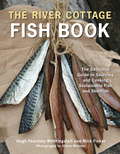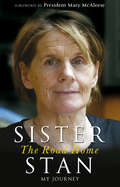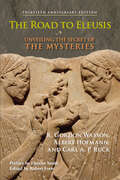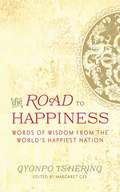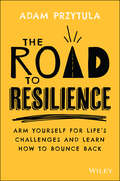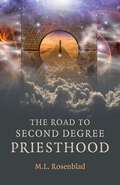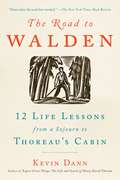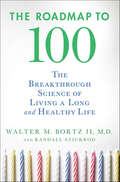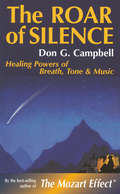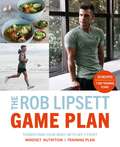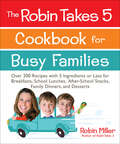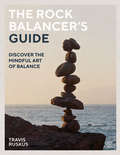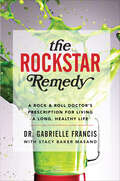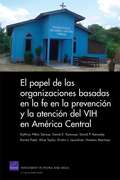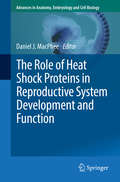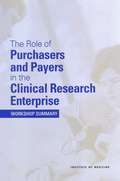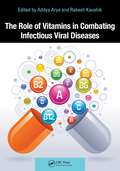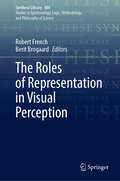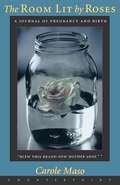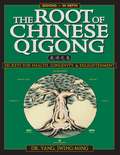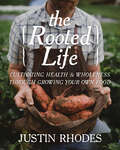- Table View
- List View
The River Cottage Fish Book: The Definitive Guide to Sourcing and Cooking Sustainable Fish and Shellfish [A Cookbook]
by Hugh Fearnley-Whittingstall Nick FisherThe formidable River Cottage team turns their attention to all matters aquatic in this definitive guide to freshwater fish, saltwater fish, and shellfish. Hugh Fearnley-Whittingstall and Nick Fisher examine the ecological and moral issues of fishing, teach individual skills such as catching and descaling, and offer a comprehensive (and fascinating) species reference section. They also demystify the cooking of fish with 135 recipes for preparing fish and shellfish in diverse ways, from pickling to frying to smoking. This ambitious reference-cookbook appeals to both intellect and appetite by focusing on the pleasures of catching, cooking, and eating fish while grounding those actions in a philosophy and practice of sustainability. The authors help us understand the human impact on the seafood population, while their infectious enthusiasm for all manner of fish and shellfish--from the mighty salmon to the humble mackerel to the unsung cockle--inspires us to explore different and unfamiliar species. Fish is superlative food, but it's also a precious resource. The River Cottage Fish Book delivers a complete education alongside a wealth of recipes, and is the most opinionated and passionate fish book around.
The Road Home: My Journey
by Stanislaus KennedySister Stanislaus Kennedy, or Sister Stan as she is affectionately known, has been described as a visionary and social innovator. Now, in The Road Home she looks back on her life - from her early years growing up on the family farm in the Dingle Peninsula, Co. Kerry, to the day when, at the age of eighteen, she made the life-changing decision to become a nun. Inspired by the work of Mother Mary Aikenhead, who founded the Sisters of Charity in 1815, Stan went on to dedicate her life to the service of the poor and to fighting for a fairer, more equal society.Here, as she reflects on the many challenges she has met, both personal and political, she recalls how she was also inspired by her mentor, Bishop Peter Birch and how, under his guidance she helped to set up an innovative model of community care in Kilkenny - a model that was to become a blueprint for the rest of Ireland.Over the years Stan also developed into a formidable campaigner and worked tirelessly - sometimes against severe opposition - to establish other immensely influential human rights and social justice agencies, includingFocus Ireland, now the biggest national voluntary organisation for the homeless, Young Social Innovators, a national social justice education programme for young people, and The Immigrant Council of Ireland (ICI), which supports the rights of migrants and their families and is a catalyst for public debate. In 2000, Stan also founded The Sanctuary - a meditation and spirituality centre in Dublin where, amidst the bustle of city life, people can experience peace, quiet, and the space to explore and develop their inner world.Inspiring and thought-provoking, this fascinating memoir provides a unique insight into the life and work of one of the most influential social activists of our day, the many political battles she has fought and won, and how, with dogged determination and courage, she has shaped the lives and the fortunes of thousands of people. Quite simply, The Road Home is the remarkable story of a remarkable woman.
The Road to Eleusis: Unveiling the Secret of the Mysteries
by Carl A. Ruck Albert Hofmann R. Gordon Wasson"...one of the two best kept secrets in history, and this book is the most successful attempt I know to unlock it. ... [A] historical tour de force."--Huston Smith, author of The World&’s ReligionsThe secretive Mysteries conducted at Eleusis in Greece for nearly two millennia have long puzzled scholars with strange accounts of initiates experiencing otherworldly journeys. In this groundbreaking work, three experts—a mycologist, a chemist, and a historian—argue persuasively that the sacred potion given to participants in the course of the ritual contained a psychoactive entheogen. The authors then expand the discussion to show that natural psychedelic agents have been used in spiritual rituals across history and cultures. Although controversial when first published in 1978, the book&’s hypothesis has become more widely accepted in recent years, as knowledge of ethnobotany has deepened. The authors have played critical roles in the modern rediscovery of entheogens, and The Road to Eleusis presents an authoritative exposition of their views. The book&’s themes of the universality of experiential religion, the suppression of that knowledge by exploitative forces, and the use of psychedelics to reconcile the human and natural worlds make it a fascinating and timely read. This 30th anniversary edition includes an appreciative preface by religious scholar Huston Smith and an updated exploration of the chemical evidence by Peter Webster.
The Road to Happiness: Words of Wisdom from the World's Happiest Nation
by Margaret Gee Gyonpo TsheringWith clear, simple prose, and poetic turns of phrase, this inspirational collection of quotations reflects the unique country of Bhutan and its universal embrace of compassion, understanding, and kindness. Some of the quotes are also a bit quirky and funny—why not? After all, this remarkable little kingdom in the Eastern Himalayas just may hold the secret to lifelong happiness. Renowned for their government edict that “gross national happiness is more important than gross national product,” the Bhutanese grounding in Buddhist ideals suggests that material and spiritual development should occur side by side—something we can forget too often. So dive into this inspiring collection of wisdom, proverbs, and general sage advice to help you on your own road to happiness—or at least put a smile on your face.Although, as the Bhutanese saying goes, You don’t have to smile if you are pleased, nor do you have to frown if you are displeased. People who do this don’t get so many wrinkles!One dream cannot rest on two pillows.Evil words are like poisonous flowers. Evil actions are like poisonous roots. It is more important to have good teeth in your head than a hat which fits properly on it. Just as there are green fertile pastures and barren plains, the same is true for the territory of the heart and mind.If you take the jungle away from a free, roaming snow leopard it will feel like a poor street dog.So give the gift of happiness today!
The Road to Resilience: Arm Yourself for Life's Challenges and Learn How to Bounce Back
by Adam PrzytulaAn effective toolbox for facing timeless and uniquely modern struggles Whatever you might be facing, know that you are not alone. From Adam Przytula, mental health advocate and founder of Armed for Life, The Road to Resilience is a down-to-earth guide for getting through the challenges that young people face daily. Nothing is off the table, from alcohol and drug use, to self-image in the age of social media, to bullying, depression and anxiety, pornography addiction, toxic masculinity, dating and relationships. If it happens in your life, you'll probably find it in this book. Written in a down-to-earth and accessible style, the book is designed to help teens with struggles they encounter every day, including those being faced for the first time by this generation. Packed full of practical exercises, life-affirming lessons and relatable stories drawn from the author's own life, this book will help you to become the person you want to be. Inside you will find: Effective techniques to reassess and improve mental health Powerful coping strategies and skills to deal with modern issues, including toxic masculinity, pornography, and unrealistic beauty standards set by influencers Tools to build self-awareness and tackle bullying in-person and online The Road to Resilience is a guide to facing down the unique challenges of today and learning the skills you need to be a healthy well-adjusted person for life.
The Road to Second Degree Priesthood
by M. L. RosenbladThe second book in a series of three, leading to the knowledge needed for becoming active clergy on the earth-based path. Delving into the many facets of the path, it also covers interfaith cooperation, religious philosophy and comparison as well as earth stewardship.
The Road to Walden: 12 Life Lessons from a Sojourn to Thoreau's Cabin
by Kevin DannThe acclaimed author of Expect Great Things: The Life and Search of Henry David Thoreau traverses on foot from Manhattan to Walden Pond, retracing Thoreau's steps and unlocking the practical principles of the mystic's life in the woods.When Henry David Thoreau launched his experiment in living at Walden Pond, he began by walking beyond the narrow limits of his neighbors, simply by putting himself at a mile remove from Concord's bourgeois epicenter - and a thousand-mile remove from stasis, complacency, and conformity. Kevin Dann emulates and extends Thoreau's experiment in radical self-education. Alternating between personal anecdotes from his spring 2017 walking pilgrimage and other "traveler" encounters and episodes told by Thoreau, Dann structures his book around 12 "injunctions"--distillations of seminal stories about overcoming convention and stasis. In this essential reading for every Thoreau enthusiast, naturalist and historian Kevin Dann brings to life an essential American icon in refreshing and modern way.
The Roadmap to 100: The Breakthrough Science of Living a Long and Healthy Life
by Walter M. Bortz II Randall StickrodWith a baby boomer turning sixty every ten seconds, we are rapidly becoming an aging society. But cutting edge research on the connection between age and disease shows us that many of the preconceptions we had about how to grow old need a second look. This groundbreaking book is full of take-away prescriptive advice which the nearly seventy-five million boomers in this nation will value. Top gerontologist and Stanford medical school professor Dr. Walter Bortz and co-author Randall Stickrod draw on new science and a thirty-year longitudinal study of centenarians to show that:• Genetics plays a smaller role in aging than previously thought• Senility, dementia, and other diseases of the elderly, are largely preventable and not an inevitable consequence of aging• Engagement, through sexual relationships, social interaction, and professional activity, is a key factor in long, healthy lives• Physical fitness can recover at least 30 years of aging Filled with in-depth insight and practical advice, The Roadmap to 100 gives you the power to control your own destiny and live well beyond 100.
The Roar of Silence
by Don CampbellThe therapeutic power of sound is inherent in everyone. Breath, tone, and music are explored through meditations and exercises by the bestselling author of The Mozart Effect. Don guides us into the world of overtoning and chanting, awakening vibratory awareness by exploring the energy beneath sound.
The Roar of Silence
by Don CampbellThe therapeutic power of sound is inherent in everyone. Breath, tone, and music are explored through meditations and exercises by the bestselling author of The Mozart Effect. Don guides us into the world of overtoning and chanting, awakening vibratory awareness by exploring the energy beneath sound.
The Rob Lipsett Game Plan: Transform Your Body with My 3 Point Mindset, Nutrition and Training Plan
by Rob Lipsett'Ireland's answer to Joe Wicks' Irish IndependentPersonal trainer and YouTube favourite, Rob Lipsett, will share with you his secrets to shaping up and getting fit at home or in the gym. Focusing on a three step approach, Rob will help you plan and follow a training regime you enjoy, and a sustainable diet that is both realistic and satisfying.· Rob will give you practical advice for getting motivated to incorporate a training regime into your daily life.· He will provide no-nonsense nutritional advice that will ensure you are eating well to maintain muscle tone, lose weight and stay healthy.· He will feature training plans that suit beginners to more advanced gym goers, and routines that can work both at home and in the gym.· He will share 20 of his favourite recipes that anyone can cook, are quick to prepare, healthy and delicious.'[Rob] shares his secrets for shaping up both body and mind' The Nicky Byrne Show'Gives lots of advice on how to transform your body through mindset, training and nutrition' The Sunday World
The Robin Takes 5 Cookbook for Busy Families: Over 200 Recipes with 5 Ingredients or Less for Breakfasts, School Lunches, After-School Snacks, Family Dinners, and Desserts (Robin Takes 5)
by Robin MillerThe host of Food Network’s Quick Fix Meals shares over 200 quick, healthy, and delicious family recipes for breakfast, lunch and snacks.As a mother of two boys, Robin Miller knows how tough it can be to rush the kids off to school before getting herself to work. That’s why she created quick and easy recipes that fit nutritious, delicious meals into our busy lives. Now your weekdays can include nourishing breakfasts, gourmet lunches, creative afternoon snacks, scrumptious family dinners, and even decadent desserts.The Robin Takes 5 Cookbook for Busy Families offers 200 recipes that are ready in a flash with five ingredients or less. These recipes are designed for breakfasts on the fly, packed lunches for school or work, slow cooker dinners that are ready right when you need them, and more!
The Rock Balancer's Guide: Discover the Mindful Art of Balance
by Travis RuskusThe first mainstream book about rock balancing, combining inspiring full-colour photographs with practical guidance on how to balance rocks and, in the process, let go of limiting beliefs and find happiness in the present moment.Rock balancing is the practice of piling up stones in natural settings, creating everything from simple towers to amazingly elaborate and apparently gravity-defying edifices. People balance rocks for fun, to challenge themselves and as a way of being mindful, connecting to nature and focusing on the present moment. This is the first mainstream book about the meditative art of rock balancing, combining technical advice on creating the structures with c. 40 spectacular colour photographs of the author's own balances, as well as guidance on approaching rock balancing as a mindfulness/meditation practice. As the book guides you through the practical techniques of rock balancing, it also explains how to breathe properly, how to approach the rocks with self-belief, face fear and go beyond what you had previously thought to be your limits. Finally, it discusses how to let go and destroy the balances you have created, leaving nature in a pristine state. The book includes inspirational quotes, tips and step-by-step instructions for beginner and more advanced rock balancers, as well as a range of meditative exercises to do while balancing, and fun challenges, such as balance 10 rocks from the biggest to smallest, balance a rock on the top of your head and balance three rocks in an impossible way. A rock balance is a metaphor for whatever you are trying to achieve in life - and this practice allows you to train yourself to do more than you ever thought possible.
The Rockstar Remedy: A Rock & Roll Doctor's Prescription for Living a Long, Healthy Life
by Dr. Gabrielle Francis Stacy Baker MasandFrom the woman known to some of the most famous bands in the world as the “Rock n’ Roll Doctor” comes a holistic prescription to achieving health and balance—even when you don’t live like a saint.As a holistic practitioner and therapeutic masseuse to the music industry's elite, Gabrielle Francis has helped famous rockers to repair, recover, and refuel from the demanding schedules and occasional overindulgences that come along with the rock star lifestyle. Now for the first time, Gabrielle shares her sought-after, insider secrets with readers everywhere. Because being overscheduled, sleep-deprived, on the road, or occasionally eating or drinking to excess aren’t lifestyle habits unique to the music industry: they are the same challenges faced by all of us, every day.In The Rockstar Remedy, Gabrielle shares her unique strategies for boosting your energy and looking and feeling your best—even when your schedule doesn’t seem to allow it. She shows readers that their health exists on a spectrum, and the simple act of making better choices every day—even if they’re not the best choices—helps us achieve balance in both mind and body. With tips for improving energy levels, lists of foods to aim for and avoid, a simple no-starvation detox, and her popular “damage mitigation techniques,” which show you secret ways to reverse the damage causes by less-than-perfect choices, Gabrielle offers a simple, effective plan for staying healthy and happy amid the chaos of our daily lives.
The Role of Faith-Based Organizations in HIV Prevention and Care in Central America
by Alice Taylor Kavita Patel David P. Kennedy Kathryn Pitkin Derose David E. KanouseDescribes the involvement of churches and other faith-based organizations (FBOs) in addressing the HIV/AIDS epidemic in Belize, Guatemala, and Honduras. The authors describe the range of FBO activities and discuss the advantages and challenges to such involvement and possible ways that FBOs can enhance their efforts, both independently and in collaboration with other organizations, such as government ministries of health.
The Role of Food in Resettlement and Rehabilitation: Good Food and Good Lives (Routledge Frontiers of Criminal Justice)
by Julie Parsons and Kevin WongExploring the role of food in enabling people with convictions to live a “good life”, this book examines the tangible ways in which growing food, cooking, and eating together has the potential to be both transformative and small steps incremental in facilitating desistance journeys for people with convictions.At its most reductive, food sustains us physically; it’s the fuel which keeps us alive. Of course, emotionally, culturally, and socially it does more than that. This edited book addresses an under-researched area of resettlement and rehabilitation which has real-world application to policy and practice in criminal justice and related areas such as mental health, physical health, employment, and education. Importantly, given the relatability of food growing, cooking, and eating to the wider public, it offers opportunities to connect the desistance journeys and lives of people with convictions to the wider public.The Role of Food in Resettlement and Rehabilitation will be of great interest to students and scholars of criminology, sociology, social work, and food studies. It is also important reading for government policymakers in criminal justice and health care, social policy, and criminal justice practitioners, including prison governors, social workers, and providers of services for people with convictions in custody and community.
The Role of Heat Shock Proteins in Reproductive System Development and Function
by Daniel J. MacPheeDue to the paucity of reviews on this subject, this volume aims to be timely and promote additional basic and translational research on these proteins in reproductive system development and function within the fields of Anatomy, Embryology and Cell Biology. The breadth of the work being conducted within Reproduction is exemplified by the contributors to this series who will provide reviews on: Grp78 roles in female reproduction, small heat shock proteins/co-chaperones as players in uterine smooth muscle function, the role of heat shock proteins in sperm function and maternal contribution to oogenesis and early embryogenesis, heat shock factors and testes development, HSP90 in ovarian biology and pathology, and the role of HSP70 in regulation of autophagy in pregnancy and parturition.
The Role of Purchasers and Payers in the Clinical Research Enterprise: Workshop Summary
by Sean Tunis Allan Korn Alex OmmayaIn a workshop organized by the Clinical Research roundtable, representatives from purchaser organizations (employers), payer organizations (health plans and insurance companies), and other stakeholder organizations (voluntary health associations, clinical researchers, research organizations, and the technology community) came together to explore: What do purchasers and payers need from the Clinical Research Enterprise? How have current efforts in clinical research met their needs? What are purchasers, payers, and other stakeholders willing to contribute to the enterprise?This book documents these discussions and summarizes what employers and insurers need from and are willing to contribute to clinical research from both a business and a national health care perspective.
The Role of Vitamins in Combating Infectious Viral Diseases
by Aditya Arya Rakesh KaushikThis book highlights the role of vitamins in preventing or reducing the pathogenesis or treatment of infectious viral diseases based on current ongoing research and past work. Using clinical evidence and trials that suggest the potential benefits of vitamin supplementation as prophylactic and therapeutic in infectious viral diseases, each individual vitamin is described in this context in separate chapters. It will be a valuable reference aid to researchers, clinicians, and medical bodies to develop improved therapeutic regimens.Key Features: Acts as a one-stop resource on the relevance of vitamins in infectious viral diseases. Provides a clinical focus on disease prevention and therapy using vitamins for clinicians and researchers. Discusses the molecular mechanisms of vitamins in COVID-19 and other viral diseases.
The Roles of Representation in Visual Perception (Synthese Library #486)
by Berit Brogaard Robert FrenchThis volume contains new papers addressing a number of new and traditional issues pertaining to the roles of representations in visual perception.Among these issues is the one concerning the nature of the perceptual state itself – e. g. on the issue of whether the perceptual state, like its distal objects, is structured, for instance by possessing a spatial character. Other issues include those of whether at least aspects of the distal object are presented immediately to us visually, whether representation plays any (interesting) role in disjunctivist and naïve realist accounts of visual experience and the relationship among visual perception, attention and representation.The anthology includes a wide variety of positions on the subject of the roles of representations in visual perception, which would help to close the literature gap and will be of interest to scholars from all schools and trends of philosophy of mind.
The Room Lit by Roses: A Journal of Pregnancy and Birth
by Carole MasoFrom one of our most daring writers comes this intimate and seductive book: a working journal of pregnancy that was both a Lambda Literary Awards finalist and a Village Voice pick for Best Books of 2000. Maso chronicles with great tenderness and awe the months of her pregnancy, from its charmed conception through the auspicious arrival of Rose.
The Root of Chinese Qigong: Secrets of Health, Longevity, & Enlightenment (Qigong - In Depth Ser.)
by Jwing-Ming YangWinner - Prix Bushido French Book Award Qigong training can improve your health, cure illness, and help you overcome the stress of daily living. Qigong is the study of Qi, or vital energy, that circulates in the human body, and it has been practiced by the Chinese for thousands of years. Qigong is a unique and comprehensive approach to health and longevity, and can be trained by anyone. Get the most from your practice by understanding the principles and foundation of this ancient science. Dr. Yang teaches sitting and standing meditation, demonstrates massage techniques, and explores the Qi pathways in your body. He explains correct breathing methods, shares secrets for quieting the mind, and discusses how to increase your body's Qi supply. In addition, he also explains important concepts such as the Three Treasures and regulating the body, breath, and mind. Whatever style you practice, you'll find the keys to successful training in The Root of Chinese Qigong. * Improve your health with Qi (vital energy) training. * Relieve stress with simple breathing techniques. * Learn the secrets that will advance your practice. * Discover the foundations of Chinese medicine. * Eliminate tension with soothing relaxation exercises. * Includes more than sixty detailed photos and illustrations.
The Rooted Life: Cultivating Health and Wholeness Through Growing Your Own Food
by Justin RhodesA permaculture expert and popular YouTube Homesteader shares the skills and the delights of becoming a part of your own food story in this inspiring, accessible, and beautiful invitation to a more abundant, healthy, and connected life. Have you ever wanted to experiment with growing your own food but didn&’t think you had the space, the time, or the knowledge? Justin Rhodes thought the same thing—until after years battling systemic illness and struggling to provide the kind of wholesome food he wanted for his family, he bought a seed packet at the grocery store and was hooked! Justin discovered the miraculous potential and empowerment of working with nature to grow food for his family, and since that discovery, he has shared his self-taught skills with hundreds of thousands of growers via his popular YouTube channel and website. Whether you're looking for greater food security, better health, tastier food, to save or earn money, connect with your food source, this book is for you. If you're looking for a different kind of life—a life focused on health and wellness—take a look down the road less traveled.Looking for every opportunity to pass his hard-earned knowledge onto others, Justin Rhodes created this inspiring and practical invitation to growing your own food and experiencing a more connected, sustainable lifestyle, no matter where you live or how much space you have. Filled with beautiful and inspiring photographs from the Rhodes&’ homestead and chock full of resources, including gardening plans, everything you need to know about raising chickens, tips for how to get your kids involved, and even recipes for how to serve up your home-grown goodness, The Rooted Life provides you with the inspiration, the encouragement, and the practical wisdom that you need to begin the journey to a more rooted life.
The Roots of Ayurveda: Selections from Sanskrit Medical Writings
by Dominik WujastykAyurveda, the ancient art of healing, has been practiced in India for more than two thousand years and survives today as a living medical tradition whose principles are at the heart of many "alternative" therapies now used in the West. This "science of longevity" has parallels with Buddhist thought, and advocates a life of moderation through which the three humors of the body will be brought into balance. The writings selected for this volume are taken from Sanskrit medical texts written by the first Ayurvedic physicians, who lived between the fifth century b. c. and the fourteenth century a. d. Here readers will find wide-ranging and fascinating advice on the benefits of garlic therapy, prayers for protection against malevolent disease deities, surgical techniques, exercise regimens, the treatment of poisons, the interpretation of dreams, and more.
